
The Secretary of the Security Council of Armenia Armen Grigoryan referred to the statement of the Assistant to the President of the Republic of Azerbaijan Hikmet Hajiyev that the main expectation of Azerbaijan from Armenia is the recognition of the territorial integrity and sovereignty of Azerbaijan. In response to inquiry of ARMENPRESS, Armen Grigoryan noted that in the context of that announcment, the Azerbaijani officials should specify which territories they see in the territorial integrity of Azerbaijan, so that Armenia could specify its position.
Faktyoxla Lab. has tried to figure out what clarifications Armen Grigoryan was talking about and what was hidden under this statement.

To begin with, the Armenian side must remember that on June 20, 2020, the European Parliament adopted Resolution 2019/2209(INI) entitled “European Parliament recommendation to the Council, the Commission and the Vice-President of the Commission / High Representative of the Union for Foreign Affairs and Security Policy on the Eastern Partnership, in the run-up to the June 2020 Summit.”
The document was prepared by Lithuanian MEP Petras Austrevicius with the participation of co-rapporteurs Radoslaw Sikorski, Anna Fotyga (both Poland), Attila Ara-Kovacs (Hungary) and Marketa Gregorova (Czech Republic). The document's preamble contains a reference to European Parliament Resolution 2009/2216(INI) Report "on the need for an EU Strategy for the South Caucasus", adopted on May 20, 2010. In paragraphs 8 and 10 of this resolution, the territories occupied at that time by the Armenian forces were called "occupied". In the new resolution of the European Parliament, as in the previous document of 10 years ago, there is no mention of the "right to self-determination".
The document also notes that “the independence, sovereignty and territorial integrity of the EaP countries are still infringed by unresolved regional conflicts, external aggression and the ongoing occupation of the territories of some of those countries...” It calls for the immediate withdrawal of foreign troops from all occupied territories. This paragraph applies to all countries participating in the Eastern Partnership, in whose territory the occupying forces are stationed and, accordingly, to Azerbaijan, whose territories were occupied by Armenia.
The document “reiterate the EU's commitment to the sovereignty, territorial integrity and political independence of the EaP countries within their internationally recognised borders, and support their efforts to fully enforce those principles; underline the importance of the unity and solidarity of the Member States in this regard” (paragraph bm). It also contains “support their efforts to fully enforce those principles; underline the importance of the unity and solidarity of the Member States in this regard.”
United Nations General Assembly Resolution 62/243, titled "The Situation in the Occupied Territories of Azerbaijan" was adopted on March 14, 2008 by the UN General Assembly at the 86th plenary session. The resolution reaffirmed "continued respect and support for the sovereignty and territorial integrity" of Azerbaijan "within its internationally recognized borders", demanded the "immediate, complete and unconditional withdrawal of all Armenian forces from all the occupied territories of Azerbaijan", and emphasized that "no state shall render aid or assistance" to maintain the occupation of Azerbaijani territories.
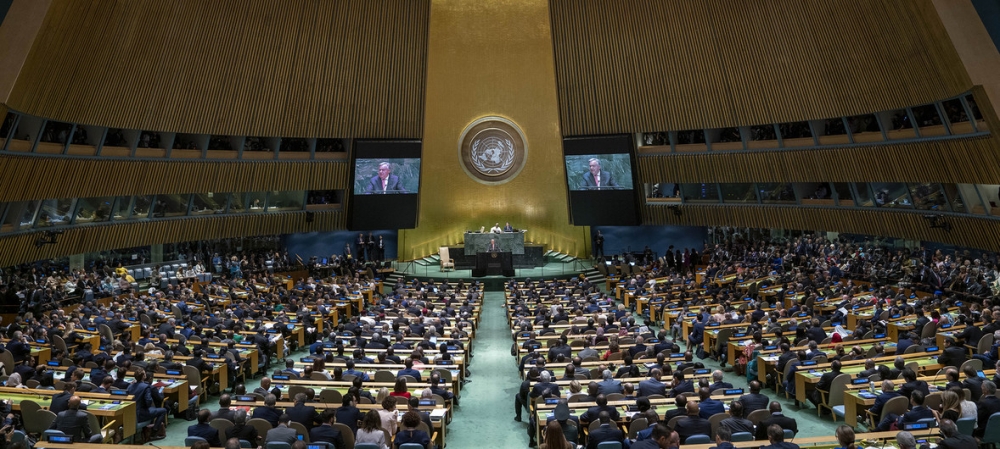
The same wording is contained in the resolutions of the UN Security Council adopted in 1993: "Reaffirming the sovereignty and territorial integrity of the Azerbaijani Republic and of all other States in the region, Reaffirming also the inviolability of international borders and the inadmissability of the use of force for the acquisition of territory."
That is, for the world community there are no problems and questions regarding the territorial integrity of Azerbaijan’s internationally recognized borders.
Further, the Armenian side should keep in mind that the Azerbaijan Soviet Socialist Republic (Azerbaijan SSR) was formed on April 28, 1920, immediately after the fall of the Azerbaijan Democratic Republic. From March 12, 1922 to December 5, 1936, it was part of the Transcaucasian Federation, and from December 5, 1936 it entered directly into the USSR as a Union Republic.
The fact is that in 1922 on the territory of the former Russian Empire there were 6 republics: the RSFSR, the Ukrainian SSR, the Belarus SSR, the Azerbaijan SSR, the Armenian SSR and the Georgian SSR. From the very beginning, there was close cooperation between them, due to the common historical fate. During the Civil War, a military and economic alliance was formed, and at the time of the Genoa Conference in 1922 – a diplomatic one. The unification was also facilitated by the common goal set by the governments of the republics – the building of socialism on the territory located “in the capitalist encirclement.”
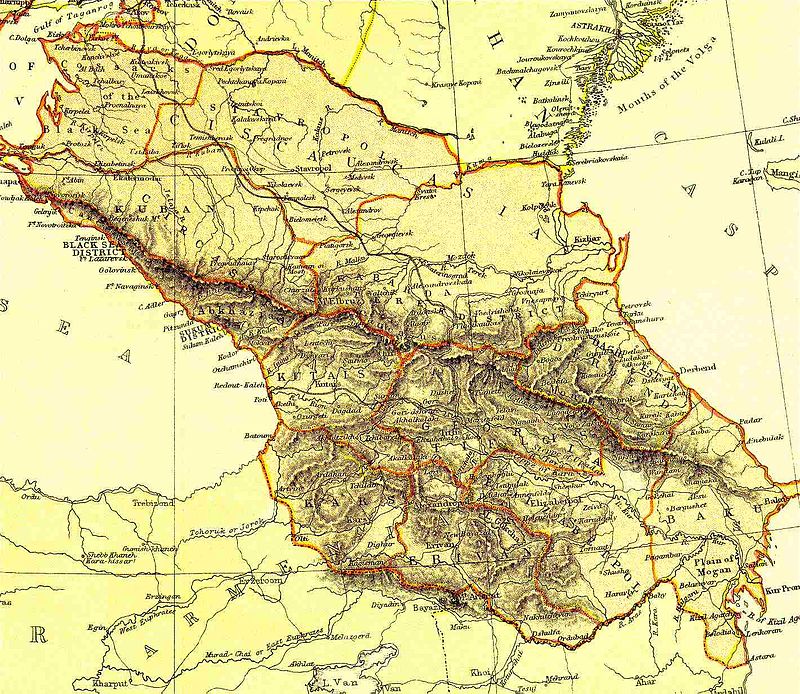
In March 1922, the Azerbaijan, Armenian and Georgian SSR united into the Transcaucasian Soviet Federative Socialist Republic. In December 1922, the First Transcaucasian Congress of Soviets addressed the Presidium of the All-Russian Central Executive Committee with a proposal to convene a joint congress of Soviets and discuss the creation of a union of Soviet republics. The same decisions were made by the All-Ukrainian and All-Belarusian Congresses of Soviets.
These decisions were preceded by a heated discussion on the way the republics would enter into a single union state. Supporters of the plan for autonomization, developed by J.V. Stalin, advocated a high degree of centralization of power, provided that the national and cultural autonomy of the republics was preserved. Lenin’s plan, supported by the majority of the participants in the unification process, on the contrary, assumed the creation of a federal state with the preservation of the sovereign rights of the republics. Namely it was taken as a basis.
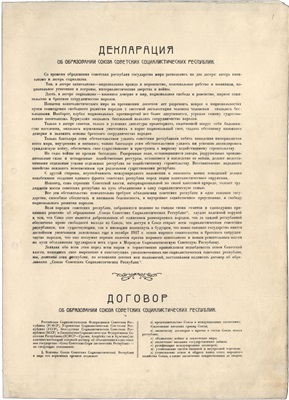
On December 30, 1922, at the I All-Union Congress of Soviets, representatives of the RSFSR, the Ukrainian and Belarusian Soviet Socialist Republics, and the Transcaucasian Federation signed the Declaration on the Formation of the USSR and the Union Treaty.
Thus, Azerbaijan and Armenia became subjects of a federal state, and despite their formal subjectivity, they remained directly subordinate to the central Bolshevik leadership in Moscow.
Going back a few years ago, after the occupation of the Azerbaijan Democratic Republic in April 1920 by the XI Red Army, the Azerbaijani Bolsheviks who seized power inherited the problem of the territorial conflict with Dashnak Armenia. The parties tried to substantiate their rights to Karabakh and Zangezur. Having lost its own army, Baku was forced to rely only on Soviet Russia in solving the most important issue for it – the restoration of the territorial integrity of the republic.
Guided by the need to earn the loyalty of Armenia, which at that time was still cooperating with the anti-Soviet Entente, the central authorities decided the issue in favor of Armenia. It was decided to transfer the territories of Karabakh, Zangezur and Nakhchivan to Armenia, but not immediately, but later, in a suitable political situation. Georgy Chicherin, the first People’s Commissar for Foreign Affairs of the USSR, played a key role in making this decision.
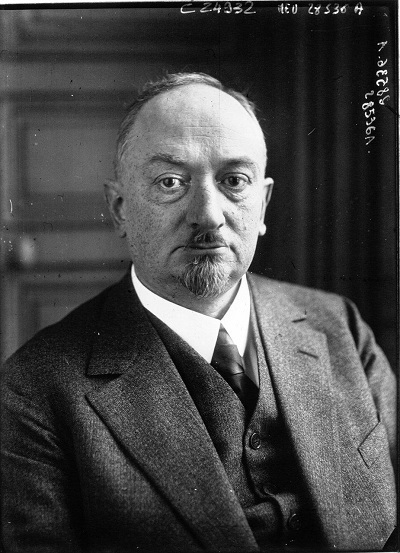
On August 10, 1920, Russia illegally ceded the territory of Sharur-Daralayaz, which belonged to Azerbaijan, to Armenia. Karabakh, Zangezur and Nakhchivan were declared “disputed provinces”
On the eve of the Sovietization of Armenia, the Bolshevik leadership, represented by Joseph Stalin, on November 4 and 9, 1920, made a number of loud statements in Baku about the further fate of Zangezur and Nakhchivan. Their essence was expressed in the intention to transfer these territories to Soviet Armenia. Having driven a wedge in this way into Azerbaijan and Turkey and creating an Armenian buffer, Moscow sought to deprive them of their direct borders in the future.
By the decision of the Politburo and the Orgburo of the Central Committee of the AKP (b) of November 30 and the declaration of the Baksovet of December 1, 1920, Zangezur and Nakhchivan were to be transferred to Soviet Armenia. These decisions were enshrined in clause 3 of the agreement between the RSFSR and the Armenian SSR of December 2, 1920, according to which all territories of the Erivan province, including Nakhchivan, as well as the Zangezur district, or rather, its western part, were recognized as Armenia. The report of the headquarters of the Caucasian Front dated July 16, 1921 says about the complete liberation of Zangezur from the Dashnak forces. Thus, the process of the annexation of the western or upper Zangezur to Armenia was completed.

Nakhchivan, as mentioned above, thanks to Turkish pressure, remained a part of Azerbaijan. For political reasons, a similar decision was made with regard to Karabakh.
In the future, Moscow continued to pursue a policy of indulging Armenia’s claims to the lands of Azerbaijan. So in 1922 the territories of Goycha and Dilijan were transferred to it, in 1923, 9 villages of Nakhchivan, in 1929 Meghri, in 1938 – partially the villages of Sadarak and Kyarki, in 1969 – the summer pastures of Garagol in the Lachin region, the territory of Chayzemi in Gubadli region, Kemerli of the Qazakh region, part of the Zod gold deposit in the Kalbajar region, in 1982 a summer pasture Injedere, part of the land near the villages of Kemerli, Aslanbeyli and Gaymagli of the Qazakh region, in 1986 – 2,500 hectares of pasture land in the Qazakh region.
In particular, under pressure from the leadership of the USSR, the Presidium of the Supreme Soviet of the Azerbaijan SSR on May 7, 1969 approved a resolution adopted on May 5, 1938 on the transfer of more than 2,000 hectares of land to the Armenian SSR in regions adjacent to the Armenian SSR. On July 14, 1969, Heydar Aliyev, elected as the head of the Azerbaijan SSR, suspended the implementation of this decision, and eventually achieved its cancellation.
He also managed to prevent the implementation of the resolution of the Central Committee of the CPSU “On abnormal relationships between some collective farms of the Shamsadil region of the Armenian SSR and the Gadabay region of the Azerbaijan SSR” dated August 5, 1969, according to which 1,568.2 hectares of Azerbaijani land were to be transferred to Armenia.
The clarifications of the borders and the clashes that accompanied them took place until the mid-1980s, one of which, in October 1984, resulted in an Armenian-Azerbaijani clash in the forest zone on the Noyemberyan-Gazakh border section.
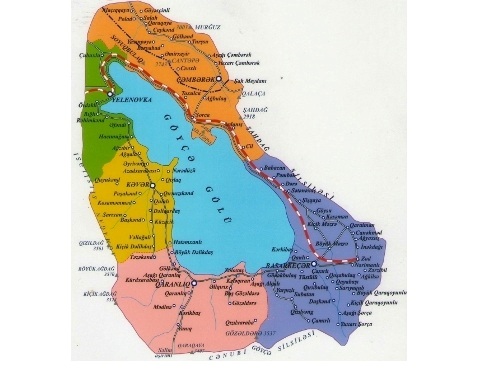
So, during the years of Soviet power, Zangezur, Goycha, part of Nakhchivan and other regions were removed from Azerbaijan and annexed to Armenia. As a result, the territory of the country, which during the period of the Azerbaijan Democratic Republic was 114,000 km², was reduced to 86,600 km².
The Armenian side should also remember that on July 5, 1921, a meeting of the Caucasian Bureau of the Central Committee of the Russian Communist (Bolshevik) Party (RCP) was held. At a meeting with the participation of a member of the Central Committee of the RCP Stalin and members of the Caucasian Bureau Ordzhonikidze, Kirov, Orakhelishvili, Figatner, Narimanov, Myasnikov and People's Commissar for Foreign Affairs of the Azerbaijan SSR Huseynov, it was decided to leave Nagorno-Karabakh within the borders of the Azerbaijan Soviet Socialist Republic. It was also decided to grant autonomy to Nagorno-Karabakh with Shusha as its administrative center.

Further, on July 7, 1923, in the mountainous part of Karabakh, the Nagorno-Karabakh Autonomous Oblast (NKAO) was formed with the administrative center of Khankendi. In September 1923, the city of Khankendi was renamed Stepanakert in honor of the head of the 26 Baku commissars, Stepan Shaumyan.
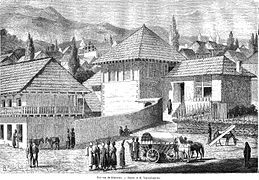
The Armenian side should also be reminded that public television of Armenia last year prepared a report from the Azerbaijani village of Karki. An employee of the TV channel Norayr Shoghikyan said that the village called Tigranashen by the Armenians was formerly called Karki. He also noted that the settlement belongs to Azerbaijan.

First of all, let's pay attention to the information about the place name Karki. The name of the village is associated with the ancient Turkic tribe of Karki. According to the information reflected in the Encyclopedic Dictionary of Place Names of Azerbaijan, the sources indicate that the Karki came to Azerbaijan in the early Middle Ages with the Kipchak tribes. There is information that at the beginning of the 19th century, a group called karkibashli existed as part of the Kazakh tribe.
The village, located on the bank of the Arpachay river, is marked as “Karkichik” in the “Detailed book of the Iravan province”, compiled in 1728. The toponym Karki is found in Azerbaijan, as well as in other territories where Turks live. For example, in the Basarkechar region of the Goycha district (now the Vardenis region of the Gegharkunik province of Armenia), there was a village called Karkibash in the 1920s on the ancient Azerbaijani land. Until 1988, only Azerbaijanis lived in the village. After the deportation of Azerbaijanis from Armenia in 1988, residents of the village of Karkibash were also forced to move to Azerbaijan.
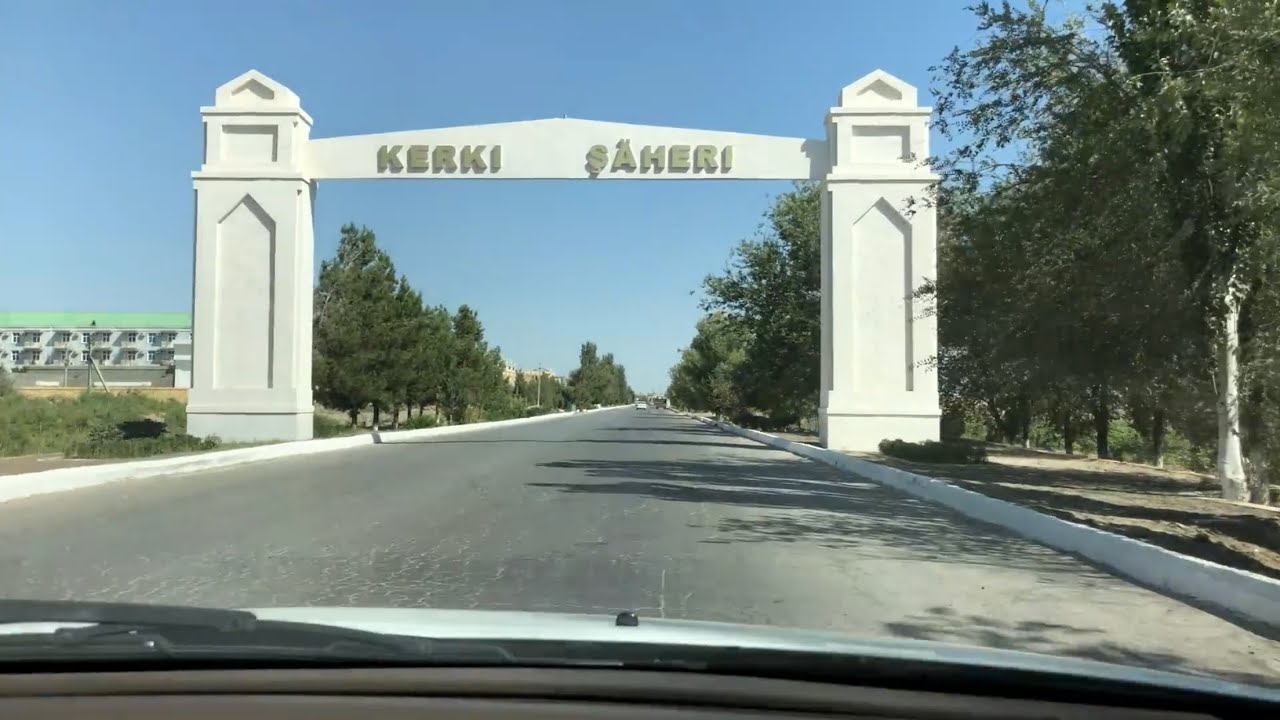
In addition, the Karabakh village of Karkijahan is associated with the name of the Karki tribe. The name of the Karki tribe is also found in Turkey and Uzbekistan. In Turkmenistan there is a city, a district, a railway station, as well as Mount Karkidag. A branch of the Turkmen tribe Ersar was called Karki. Some historians associate the toponym "Karki" with the name of the Turkic tribe Karkuk. On the territory of the village of Karki, there are also such Turkic toponyms as "O Tay", "Sulu Zaga", "Bazirkhana", "Kohnya Karki", "Delik dash", "Sanam zagai”,“Gavurgala”,“Hell's Valley”,“Shirran”,“Golden Stone”,“Gurdbaba”,“Alma Yakkushu”,“Girmizi Guney”,“Shurut Bulagi.” Also, on the territory of the village there is a grave of a Turkish soldier, who at the beginning of the 20th century was martyred there in battle.

The village of Karki is one of the exclaves of Azerbaijan located on the territory of Armenia. Until August 1990, the village was part of the Sharur region of the Nakhchivan Autonomous Republic. The village with an area of 960 hectares with 500 inhabitants is included in the administrative-territorial unit of the Sadarak region, formed by the decision of the Presidium of the Supreme Soviet of Azerbaijan dated August 29, 1990. By that time, Karki had already been occupied by the Armenian armed formations. Armenian militants have been shelling the village since 1989. In mid-January 1990, these shelling intensified.
Finally, on January 18, 1990, the Armenians took control of the settlement. Three officers of the Sharur district police department and about 30 villagers tried to repel this attack, but due to the superiority of the Armenian armed forces in quantity, as well as with the help of the 7th Army of the Armed Forces of the former USSR, Karki was occupied. In fact, the Armenians intended to seize the Sadarak region of Nakhchivan after the occupation of the village. Along with Karki, Sadarak was also attacked by Armenians on a large scale. In 1990-1993, the Armenians attacked the region 14 times, about 300 cannon shells were fired, about 500 houses, schools, public and administrative buildings, and social facilities were destroyed. However, the resistance of the local self-defense forces didn’t allow these plans of the Armenians to come true.
Thus, the village of Karki became the first territory of Azerbaijan occupied by the Armenians. Residents of the village still live in the village of Yeni Karki, built in the Kangarli region of Nakhchivan. According to the statistics of 2019, the population of the village is 986 people.
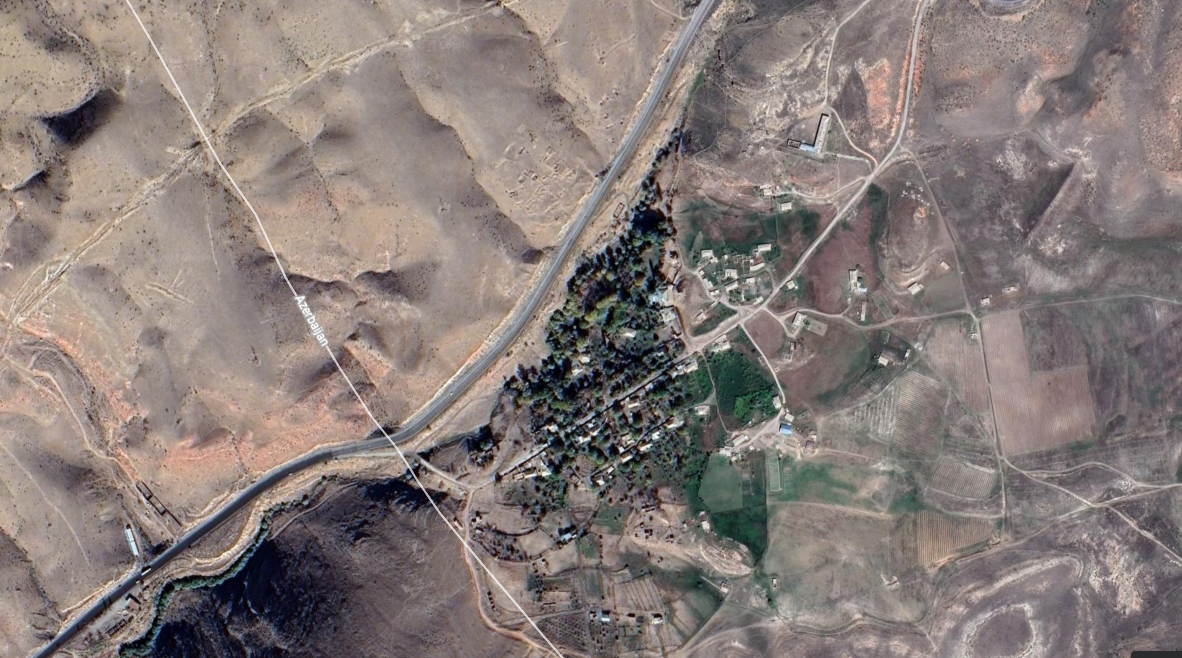
Located 8-10 kilometers from Sadarak, Karki is of strategic importance. The fact is that the main road connecting the north and south of Armenia passes through the territory of Karki.
It is not the first time that the Armenians admit that they are newcomers to this settlement.

One of the Armenians who settled in the village in an interview with a foreign journalist said that they came here after the Azerbaijanis were evicted, the former name of the village was Karki, and later it was renamed Tigranashen. Tigran was a member of one of the Armenian armed groups that occupied the village. Some Armenian sources say that the village was named after King Tigran II.
Historical documents indicate that at one time Azerbaijan owned not only the village of Karki, but also the adjacent territories. So, even in Appendix I (K) of Article 16 of the Moscow Treaty signed between Turkey and the Russian Soviet Federative Socialist Republic on March 16, 1921, the borders of Nakhchivan were determined within the framework of “Station Ararat - Mount Saraybulag - Komurludag - Sekidag - Gurtgulag village - Komsur dag - Kuku dag - administrative border of Nakhchivan district from the East”. Thus, according to this agreement, the border of Nakhchivan passed not in Sadarak and Arazdag, but 25-30 km from the Ararat station in Armenia.
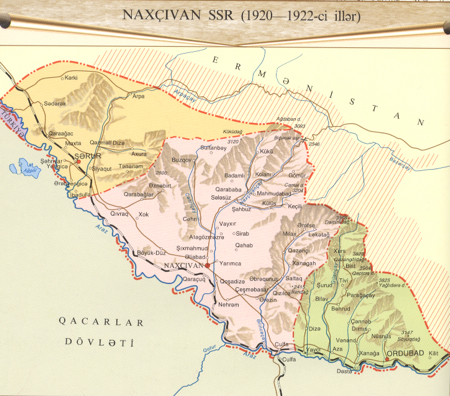
The Treaty of Kars, signed on October 13, 1921 between the Transcaucasian Soviet Federative Socialist Republic and Turkey, also reflected that the border of Nakhchivan runs “in the direction of the village of Urmia-Arazdek station-Mount Dashbura-Adenemdera-Mount Bagir”. This means that such territories as "Kishirchag Gorge", "Hell Gorge", "Karaaagach", "Gurdbaba", including "Karki Plain", "Hasangulu Bagi", "Jakha",”Bazirkhana”, “Gizildash”, “Eski-Karki” also belong to Azerbaijan.
And now let's consider the process of transferring Zangezur, the historical Azerbaijani land, to Armenia.
For complete clarity, let’s note that the Zangezur district covered the territories of the present Kafan, Goris, Garaks (now Sisian) and Meghri districts of modern Armenia, as well as the Zangilan, Gubadli and Lachin districts of Azerbaijan.
After the National Council of Azerbaijan ceded the city of Irevan to the Armenians as a political center on May 29, 1918, contrary to expectations, the Armenians did not give up their territorial claims to Azerbaijan, but demanded that the territories of Nakhchivan, Zangezur and Nagorno-Karabakh be annexed to Armenia. These attempts intensified under the auspices of the Bolsheviks after the occupation of Azerbaijan by Soviet Russia on April 28, 1920.

In order to give Zangezur to Armenia, the Bolsheviks first turned this territory into a “disputed” one. The basis for the transfer of Zangezur to Armenia was laid by an agreement between Bolshevik Russia and Dashnak Armenia. Four out of six agreements signed on August 10, 1920 dealt with territorial issues. Under the terms of this agreement, the Caucasian Bureau of the Central Committee, without the consent of the Bolshevik leadership of Azerbaijan, Sharur-Dereleyaz region of Nakhchivan was unconditionally transferred to Armenia. Karabakh, Zangezur and Nakhchivan were declared "disputed territories" between Azerbaijan and Armenia.
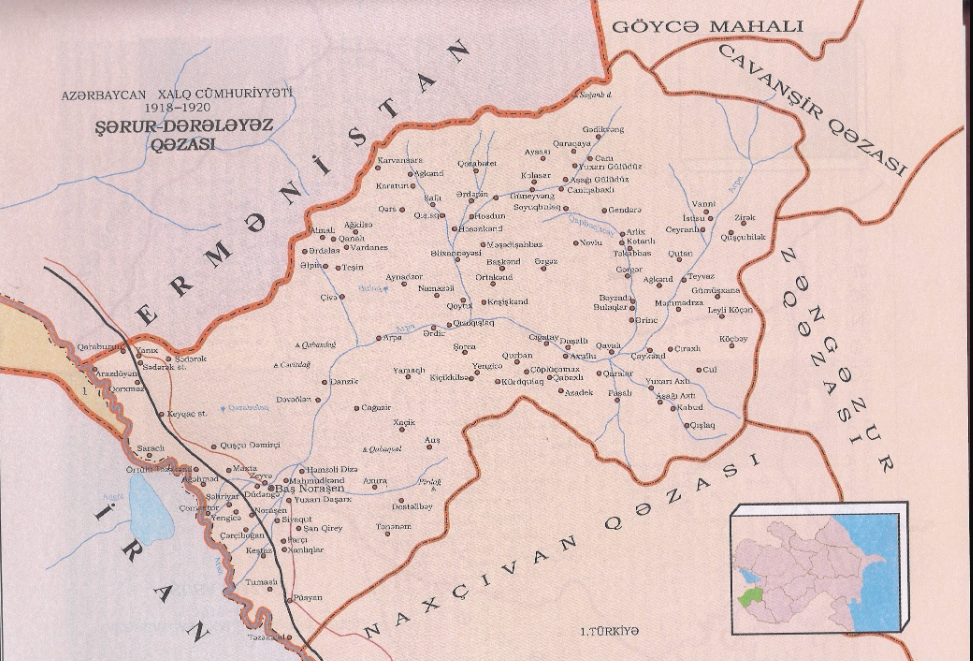
The researchers say that the transfer of the Sharur-Dereleyaz region to Armenia created a political basis for the capture of Zangezur. Thus, Soviet Russia also pursued a policy of Sovietization of Armenia at the expense of Azerbaijani lands.
Finally, on November 29, 1920, the day after the establishment of Soviet power in Armenia, at a joint meeting of the Politburo of the Central Committee (CC) of the Communist Bolshevik Party of Azerbaijan, a decision was made to transfer Zangezur and Nakhchivan to Soviet Armenia. Nevertheless, in a statement made on December 1, 1920 by the first Chairman of the Council of People's Commissars of the Azerbaijan SSR, Nariman Narimanov, only Zangezur was transferred to Armenia.
The researchers say that the following several factors prevented the transfer of Nakhchivan to the Armenians:
Establishment of Soviet power in Nakhchivan
Turkish control of the region
Azerbaijani protests
Treaty of Kars concluded with Turkey in October 1921.
Although the transfer of Zangezur to Armenia was officially announced in December 1920, the process of transferring the region under the control of Yerevan did not take place immediately due to discontent in Azerbaijan. At a meeting of the Politburo of the Central Committee of the Communist Party of Azerbaijan on January 12, 1921, a decision was made on the “administrative organization of the Muslim part of Zangezur”. According to the decision, Zangezur was proposed to be divided into two parts - Western Zangezur and Eastern Kurdistan. The Armenian SSR received 3.637 sq. versts from more than 6.742 sq. versts (a square verst is equal to 1.13806224 km2) of the territory of Zangezur, 3.105 sq. km. versts were left in the Azerbaijan SSR.
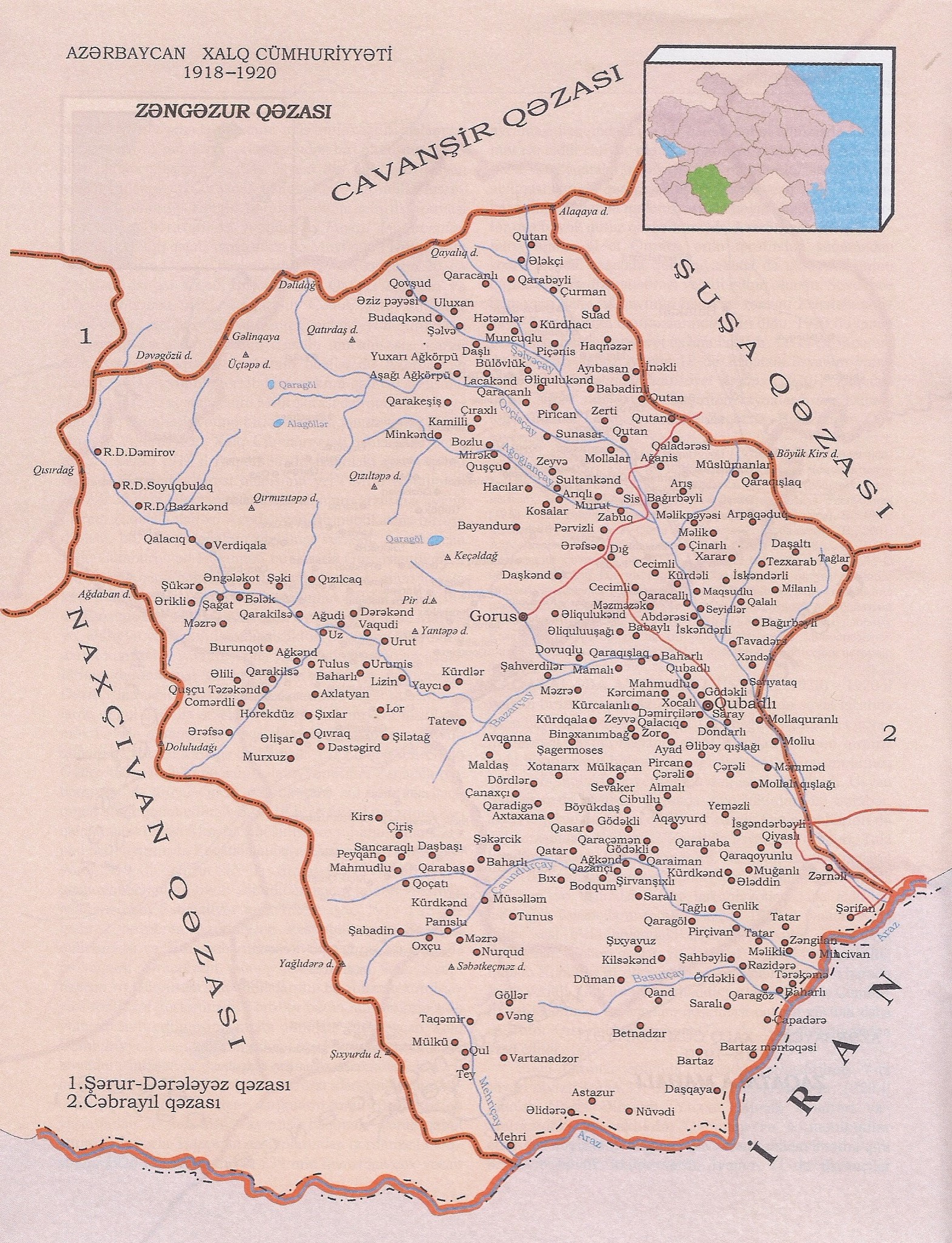
Despite all this, the uncertainty regarding Zangezur continued for several years. Finally, at the meetings of the Presidium of the Transcaucasian Central Executive Committee (CEC), held on January 1 and June 20, 1927, the issues of assigning 24 villages in the Meghri-Jabrayil district and 1065 acres of land in the Zangezur-Kurdistan district to one or another county were discussed.
By a resolution of the Transcaucasian Central Executive Committee dated March 31, 1927, the border area with an area of 172.8 tithes of the Zangezur district of Azerbaijan was included in the "disputed zone", 56.1 tithes of which were transferred to Armenia, and 116.7 tithes remained with Azerbaijan. Despite the protests of the Central Executive Committee of Azerbaijan, this issue was resolved in favor of the Armenians.

At a meeting of the Presidium of the Transcaucasian Central Executive Committee (CEC) on February 18, 1929, under the pretext of creating an Armenian region in Meghri, three villages of the Zangilan region of Azerbaijan were transferred to Armenia: Nuvedi, Ernezir and Tugut. In general, the villages of Jabrayil, Ordubad and Zangezur districts were transferred to the Armenians to form a district in Meghri. A special role in the creation of this region at the expense of Azerbaijani lands was played by the ethnic Armenian Levon Mirzoyan, who in 1926-1929 became the first secretary of the Central Committee of the Communist Party of Azerbaijan. Thus, with the transfer of territories in the south-west of Zangezur to the Armenians and the creation of the Meghri region, the communication of Azerbaijan with Nakhchivan became more complicated.
At the famous meeting of the Presidium of the Transcaucasian Central Executive Committee (CEC) on February 18, 1929, a decision was also made to transfer 657 square kilometers of the territory of Nakhchivan to the Armenians. It was at this meeting that the fate of the Azerbaijani villages, which we spoke about at the beginning, was decided.
By decision of the Presidium of the Transcaucasian Central Executive Committee, 10 villages of Nakhchivan were transferred to Armenia. These are Gurdgulag, Khachik, Horadiz of Sharur district, Ogbin of Shahbuz district of Nakhchivan Autonomous Soviet Socialist Republic, Agkhach, Almali, Itgiran, Sultanbek, Gorchevan, as well as Kilit of Ordubad district. These villages were located on the “isthmus”, and after their transfer to Armenia, the overland communication between Azerbaijan and Nakhchivan was finally interrupted.
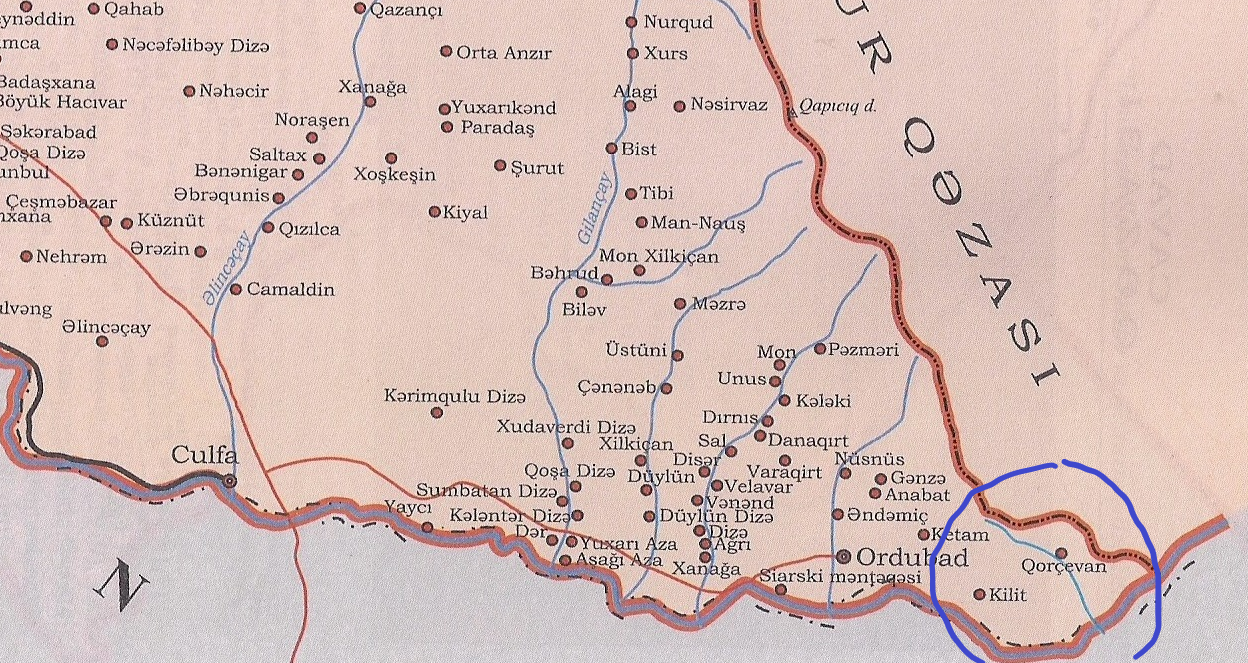
This decision of the Presidium of the Transcaucasian Central Executive Committee (CEC) contradicted the terms of the treaties that are the guarantors of the territorial integrity of Nakhchivan - Moscow, concluded in October 1921 and Kars, signed in March 1921.
So, this question is not simple, but one thing is true: Armenia and Azerbaijan must intensify negotiations for a final peace. And the main condition for the start of peace negotiations, including for the process of defining borders, is the recognition of each other's territorial integrity by the parties. And any attempts by the Armenian leadership to question the territorial integrity of Azerbaijan with counterproductive reservations is a bad idea, fraught with danger for Yerevan.




















